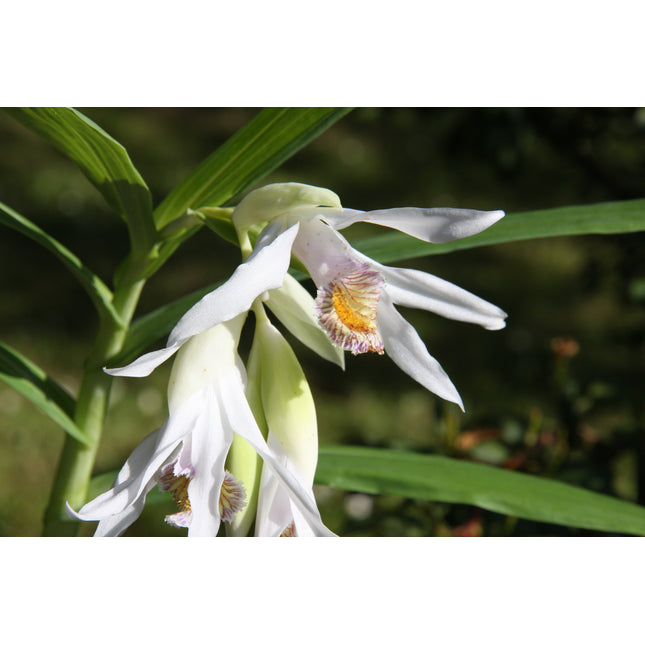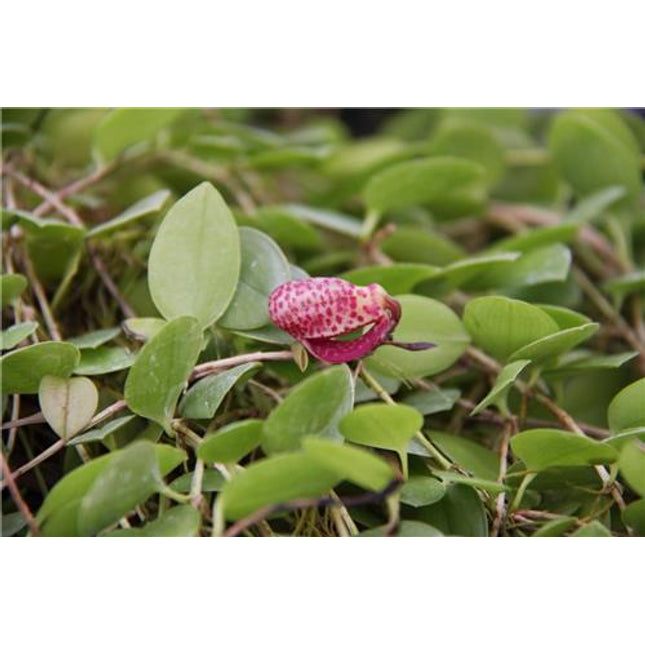
Some need a little more time before selling, some seasonal, but all will be back someday!

Some need a little more time before selling, some seasonal, but all will be back someday!

This orchid is rarely found for sale in the U.S. A native to SE Asia, this deciduous species quickly grows into a 4' plant that resembles bamboo with its oppositely alternating blue-green leaves. The fragrant, crystalline white flowers have a hairy, burnt orange lip and are held on a terminal inflorescence of 5-10 flowers. The plant grows very quickly starting early spring but rarely produces more than one cane per year. In the fall the leaves will fall off and the plant will remain dormant all winter. We withhold water until the new growth is 2" tall the following spring. After the new growth reaches a foot or so we cut off the old cane and lay it flat on a moist substrate and eventually babies will grow at the nodes.
$21.99

1 gallon bag (approx. 12 ounces) of Tillandsia usneoides. Extremely healthy, greenhouse-grown Spanish Moss. Greenhouse-grown Spanish Moss generally does better in captivity when compared to wild-collected plants. It is generally more healthy with less dead material mixed in and you don't have to worry about hitchhiking creepy crawlies!Care: Because of its small size and fine texture, T. usneoides needs to be watered more often than other Tillandsia, usually 1-3x's a week depending on weather and season. Spritz with a very weak fertilizer solution 1x/month. Prefers temps from the mid 50's at night up the 90's during the day with high humidity and a breezy environment. Can take full sun but prefers mottled sunlight- bright indirect light.
$10.99

Well-established blooming size plant division in a 2.25" pot. This plant has flowers that never truly open. Instead, a tiny slit forms in the side of the flower allowing the tiny gnats that pollinate it in. Purple and white flowers measure just under an inch long and last 6 weeks. For us, the plant flowers in the late fall. These plants grow well in cool to intermediate temps with medium/low light and should not be allowed to dry out completely. As you can see in the pics, specimen plants form a creeping mat and grow well on vertical or horizontal plaques. If you're into Pleurothallids, rare plants or the weird ones-this is one!
$17.99